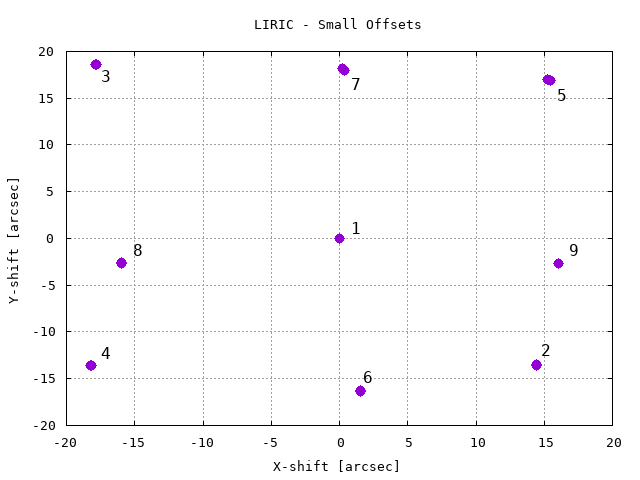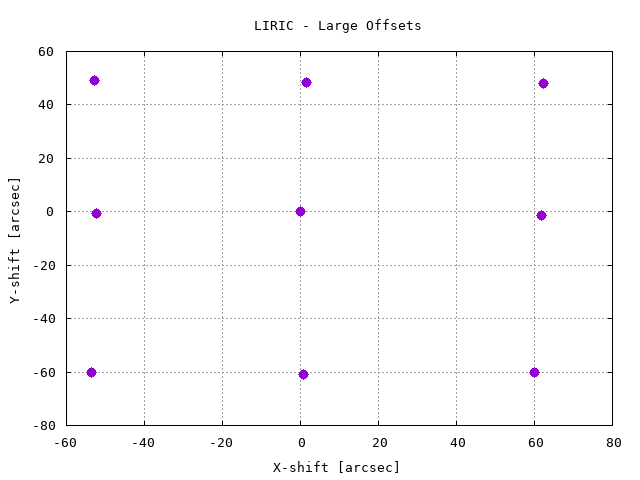LIRIC

LIRIC under development in lab (covers removed). ©2023 A.Piascik
Introduction
The Liverpool Infra-Red Imaging Camera is an instrument development project co-funded by STFC and LJMU. It was designed and built by the ARI and will be available from 2024 Q1, replacing the now-decommissioned IO:I camera. It offers rapid X and Y axis fixed-distance offsetting (nodding) for sky background subtraction.
Status
2024 Q1:
Installed on-mount and available for raw observation. Pipeline in development
Specifications & Performance
Data is for detector temperature = -20°C
| Detector | 640 x 512 pixel InGaAs sCMOS by SCD.USA |
| Image area | 607 x 510 pixel Excluding bias strip and edge rows |
| Pixel scale | 0.29 arcsec/pixel (no binning available) |
| Field of view | 3.0 x 2.5 arcmin (no windowing available) |
| Gain | 0.52 electrons/ADU |
| Dark current | 821 electrons/second |
| Read Noise | 32 electrons |
| Linearity | < 1 % |
| Bit depth | 8520 electrons |
| Exposure | 0.1 or 1.0 seconds co-added for longer exposure time |
| Approximate Zeropoint | 22.8 (H-band) |
Filter Set
LIRIC has an uncooled 5-position filter wheel. Currently, R-band, J-band and a FELH1500 low pass filter installed. The FELH1500 filter and sCMOS detector response combine for a pseudo H-band.
Filter Name |
FWHM Wavelength Range |
Flat Fielding FITS |
5700-7100 |
||
11200-13800 |
||
15200-16700 |
Dithering
Dithering is achieved by two cams to mechanical offset the camera X and Y positions within the image plane.
The camera position cycles through each offset in sequence for each exposure up to the number of positions requested.
Movement between positions takes between 2-4 seconds.
The base exposure time at each offset position is set in the configuration to 100ms or 1000ms.
The actual exposure time at a position is the sum of co-added base exposures times.
Read-out time is negligible.


Phase II Options
Instrument Config - Create New Instrument Config
Detector Config - Binning
1x1 only available
Filter Specification - Filter Wheel 1
FELH1500 - pseudo K-band filter
Barr-J
Bessell-R
Nudgematic - Offset Size
Sets the linear offsets from the centre position
None - No offset, camera will not move
Small - 20 arcsec linear offsets
Large - 60 arcsec linear offsets
Co-add - Exposure Length
Base exposure time used for co-adding images to produce a FITS file for a position
100ms
1000ms
Exposure Dialog Box
Exposure
Mult-run button must be selected
repeats
The number of offset positions the camera will move to
Offset positions are visited in the order, 1-9
Positions are omitted if repeats < 9, or revisited if repeats > 9
Exposure Time
The total exposure in seconds for a single visit to an position
It must be a multiple of Co-add - Exposure Length
Bias and Darks
The LIRIC uses a sCMOS detector and does not have a shutter.
IR observations normally take several offset images and use sky-subtraction to remove bias and dark currents.
For single exposures prepared bias or dark frames are provided below.
Bias frame exposure time is 20µs, dark frame exposure is either 100ms or 1s
For dark frames a gold mirror target is automatically selected as the filter.
File |
Type |
Median of 10 x 20µs frames |
|
Median of 20 x 1s dark exposures |
|
Median of 20 x 100s dark exposures |


